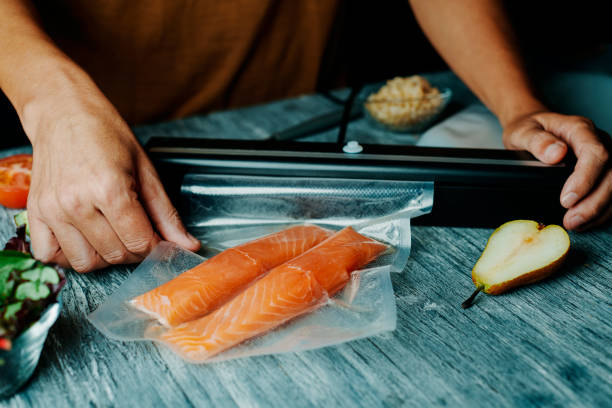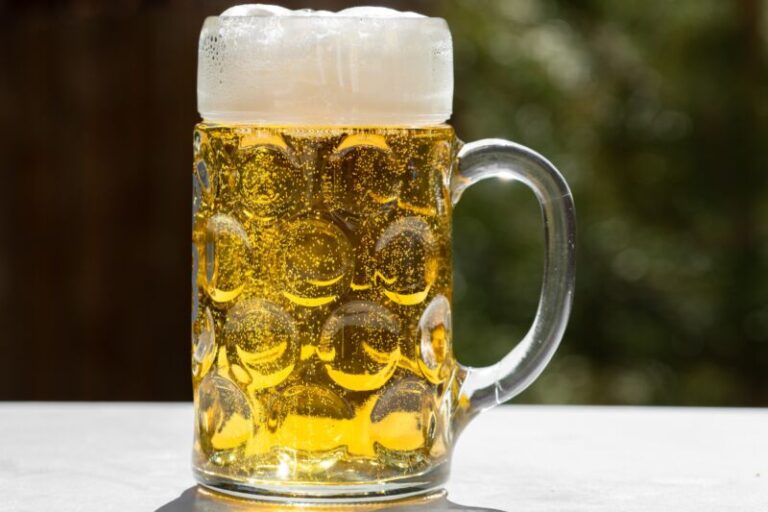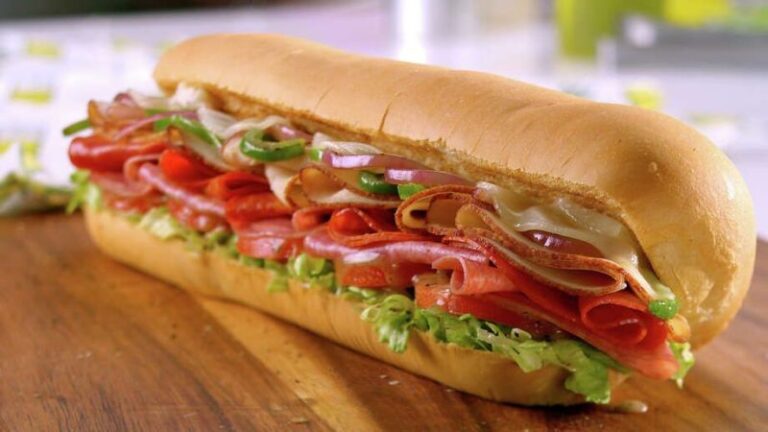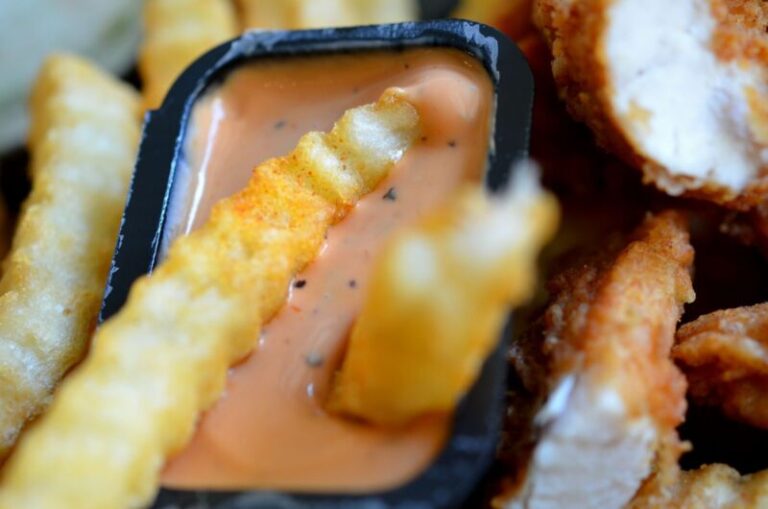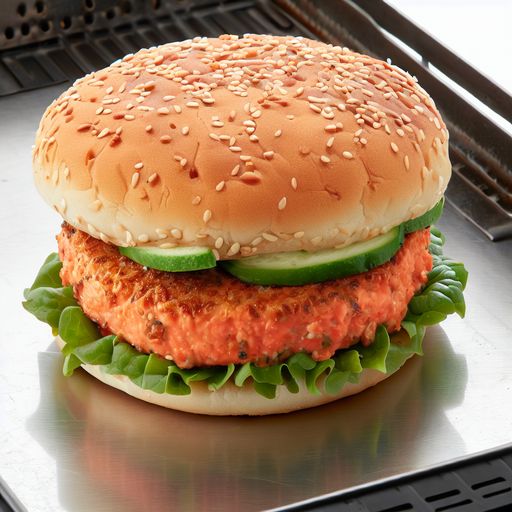How Long Does Vacuum Sealed Salmon Last in the Fridge?
Salmon is one of the most popular and nutritious fish available. With its rich omega-3 fatty acids content and high-quality protein, salmon provides some great health benefits. However, like any other fish, salmon is highly perishable and can go bad quickly if not stored properly.
One of the best ways to preserve salmon and extend its shelf life is to vacuum seal it. Vacuum sealing removes oxygen from the packaging which slows down the growth of bacteria and keeps the salmon fresh for longer. But how long does vacuum sealed salmon actually last in the fridge?
In this blog post, I will discuss everything you need to know about the shelf life of vacuum sealed salmon and provide tips on how to get the maximum freshness out of it.
Understanding Vacuum Sealed Salmon
Vacuum sealing is a process by which air is removed from the packaging and then it is sealed completely to prevent any air from getting back in. This lack of oxygen creates an anaerobic environment that limits bacterial growth and oxidation reactions.
Vacuum sealing gives salmon and other fish a significantly longer shelf life compared to conventional storage methods. It can keep the salmon fresh for a few extra weeks.
Salmon that is commonly vacuum sealed includes:
- Fresh raw salmon fillets or steaks
- Smoked salmon slices
- Canned salmon
Vacuum sealing maintains the quality, texture, color, and nutritive value of the salmon. It’s an efficient method for long term storage of salmon in the fridge or freezer.
Factors Affecting Shelf Life of Vacuum Sealed Salmon
How long vacuum sealed salmon lasts depends on a variety of factors like:
Quality of Salmon
- Fresher salmon has a longer shelf life. Salmon that is already losing freshness will deteriorate quickly even when vacuum sealed.
- Fatty fish like salmon are more perishable. The fat content leads to faster spoilage.
- Previously frozen salmon lasts shorter. The texture and color changes due to freezing reduces shelf life.
Packaging Method
- Proper vacuum sealing is must for removing oxygen completely. Any air pockets left can make it spoil faster.
- Good quality, food-grade packaging prevents leaks or tears that compromise the vacuum seal.
- The thickness of the packing material also impacts shelf life. Thicker plastic bags keep air out longer.
Storage Temperature
- Storing vacuum sealed salmon below 40°F inhibits bacterial growth. Higher fridge temperatures reduce how long it lasts.
- Repeated temperature fluctuations shorten shelf life as bacteria proliferate faster. Stable fridge temperature works best.
- Keeping the package fully immersed in ice during thawing also extends shelf life.
So following proper vacuum sealing methods and guidelines for storage, handling, and thawing is key to preserving salmon with this technique.
How Long Does Vacuum Sealed Salmon Last Refrigerated?
Now that you know the major factors that impact the shelf life of vacuum sealed salmon, here is a detailed breakdown of how many days it can last refrigerated:
Fresh Raw Salmon
- Fillets or steaks
- 2-3 weeks in the fridge
- Whole salmon
- 10-14 days refrigerated
Smoked Salmon
- Sliced
- 3-4 weeks refrigerated
- Whole smoked side
- 2-3 weeks in the fridge
Canned Salmon
- After opening
- 3-5 days in the fridge
Salmon Leftovers
- Cooked salmon dishes
- 3-4 days refrigerated
The fridge temperature should be set between 35°F and 38°F for best results. Use these timelines as a guideline but also rely on your senses. Discard vacuum sealed salmon if you notice any sour odors, sliminess or mucus on the surface, or other signs of spoilage.
Freezing extends the shelf life of vacuum sealed salmon to 6-8 months. Thaw frozen salmon properly before using.
Proper Storage and Handling
To get the most out of your vacuum sealed salmon, follow these storage and handling tips:
- Cool the salmon to below 40°F before vacuum sealing. This prevents bacteria from multiplying.
- Use high-quality, food-safe packaging meant for vacuum sealing. Prevent any air pockets inside the bag.
- Portion the salmon into meal-sized pouches before vacuum sealing for easier storage and thawing.
- Remove as much air as possible and get a tight seal. Check that no air pocket is left inside.
- Store the vacuum sealed pouches in the coldest section of the fridge, like the bottom shelf.
- Avoid keeping the package at room temperature before refrigerating. Refrigerate immediately.
- Don’t open the vacuum sealed package until you are ready to use the salmon. Re-sealing compromises the vacuum.
- Once opened, store the leftovers in an airtight container and consume within 3-4 days.
Following healthy fridge hygiene practices also help. Keep the fridge clean and wipe spills promptly. Maintain a consistent fridge temperature between 35-38°F.
Signs that Vacuum Sealed Salmon is Spoiled
Despite proper storage in the fridge, vacuum sealed salmon can still spoil eventually. Look out for these signs of spoiled salmon:
- Slimy texture and slimy surface
- Fishy, ammonia-like or sour odor
- Discoloration and fading of the flesh
- Soft, mushy flesh
- Dents on the vacuum sealed pouch indicate air leaked inside
- Liquid leaking from the package
- Gas pockets inside the bag
- Mold growth inside the bag or on salmon
Never consume salmon with any of these spoilage characteristics. Discard immediately if you notice these signs. It’s always better to be safe than sorry when it comes to fish that has gone bad.
Tips to Extend the Shelf Life
Here are some extra tips to extend the shelf life of vacuum sealed salmon:
- Freeze the vacuum sealed packages for long term storage of 6-8 months. Thaw overnight in the fridge before using frozen salmon.
- Blanch or steam the salmon lightly before vacuum sealing. Heat treatment slows down enzymatic activity.
- Marinate the fillets in vinegar or lemon juice for some time before vacuum packing. The acidity inhibits bacterial growth.
- Double wrap the pouches for extra protection and improved vacuum.
- Store the vacuum sealed packs in the freezer if the fridge space is limited. Thaw in the fridge when you need to use it.
Following safe vacuum sealing and refrigeration methods lets you enjoy fresh, nutritious salmon for a few weeks. Take note of the storage guidelines and signs of spoilage, and your salmon can stay fresh until the best-by date and beyond.
Conclusion
Vacuum sealed salmon can stay fresh in the fridge for 2-4 weeks depending on the type and handling. Proper refrigeration, high-quality packaging, freezing and avoiding temperature fluctuations are key to maintaining its freshness and extending shelf life. Follow these tips and enjoy vacuum sealed salmon for a good long while before it needs to be discarded. Always rely on your senses, and discard salmon that shows any foul odor, change in color or texture. I hope this article gave you a good understanding of how long vacuum sealed salmon lasts in the fridge.
